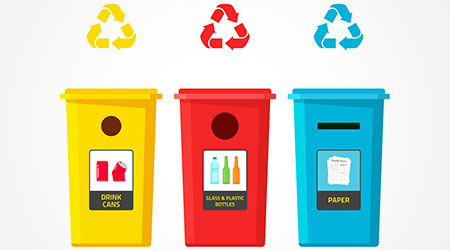
TRUE Zero Waste Certification: No Waste Is Good Waste
November 21, 2017
The sheer volume of waste that a building generates on a daily basis is simply mind-boggling. And if you’ve ever done the “dumpster dive” as part of waster audit, then you know that it’s not just the volume that’s impressive; it’s the volume of all different kinds of trash. Where does this stuff even come from?
Naturally, any sustainability initiative you undertake must cover waste reduction in some form = carefully considering how you choose products, how they’re used in the facility, and how both of those decisions affect end-of-life.
These days, many facilities are even taking the heroic step of moving to zero waste. A new certification from the US Green Building Council and administered by Green Building Certification Institute called TRUE Zero Waste (that’s Total Resource Use & Efficiency) is providing guidance and certification for facilities. TRUE Zero Waste launched in September and currently has more than 130 projects (encompassing 268 million square feet) using the rating system.
Resource efficiency and moving to zero waste begin with product selection – determining the components of a product by understand its total life-cycle. These days, more and more manufacturers are completing Environmental Product Declarations for their products. This transparency has really helped all who choose products make better choices about what comes into their facilities, and how they can be disposed or recycled at the end of their lives.
While waste audits and consulting EPDs may require more front-end time, and in some cases cost for higher quality products, the payoff is in the savings, as is the case with most sustainable strategies. Resource efficiency means using less, and therefore, buying less in the long term. And of course moving towards zero waste has a profoundly positive effect on the environment at large.
This Quick Read was submitted by Greg Zimmerman, executive editor, Building Operating Management. Read his cover story on the how sustainability and resilience complement each other.
Next
Read next on FacilitiesNet












